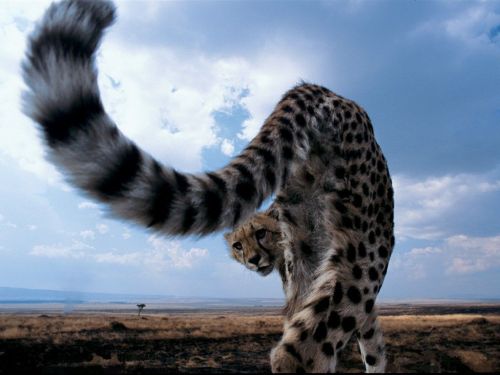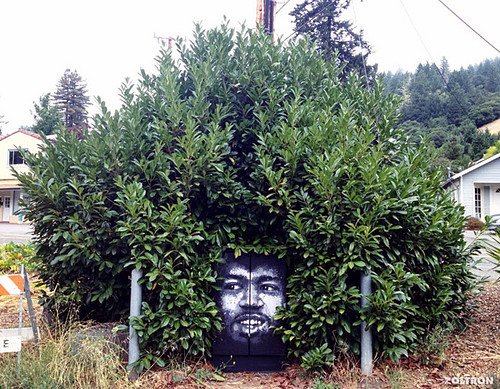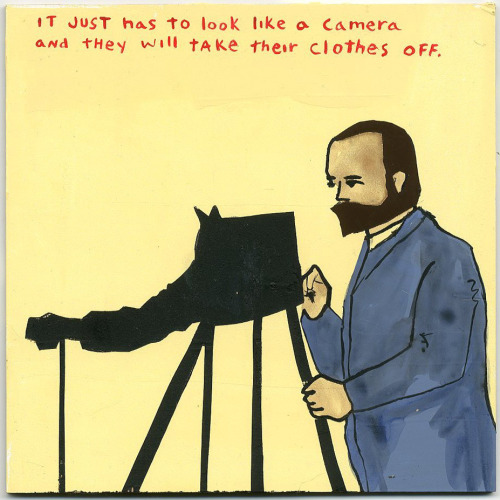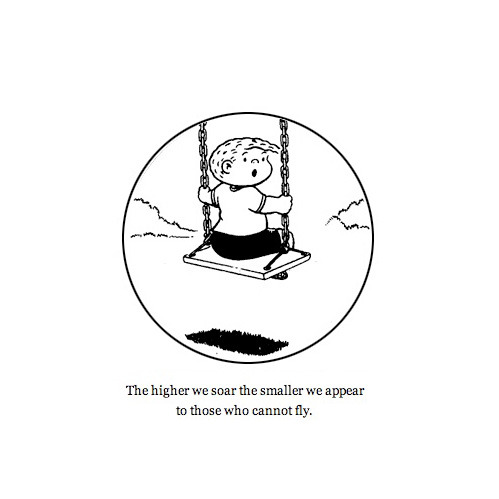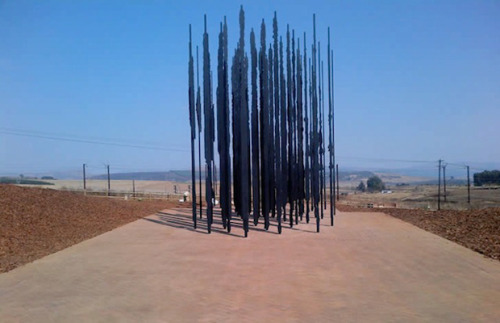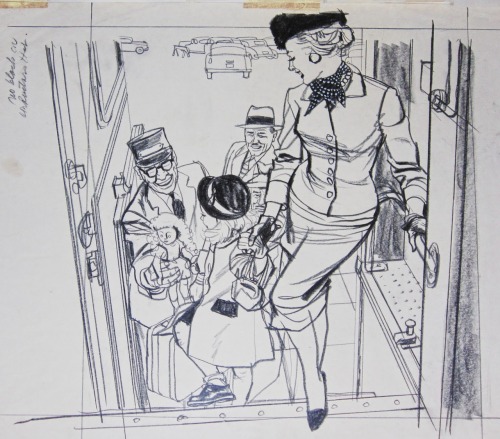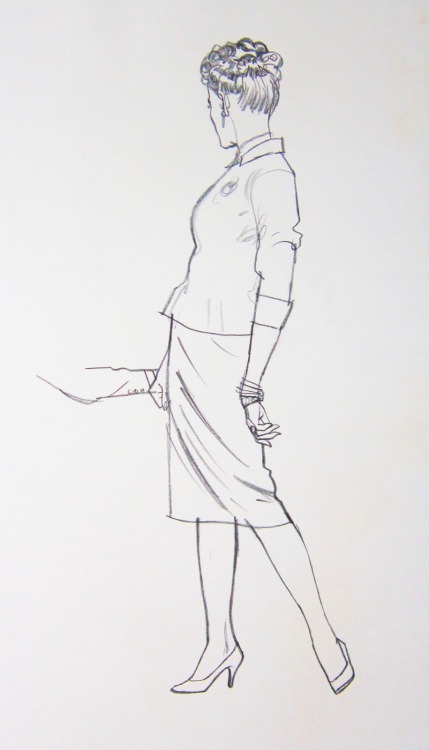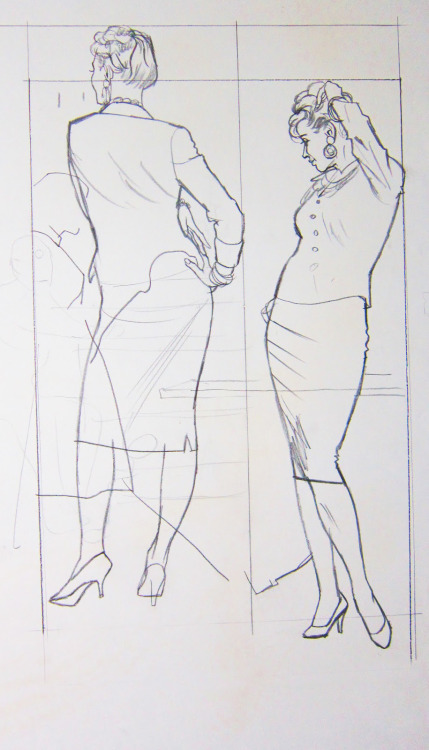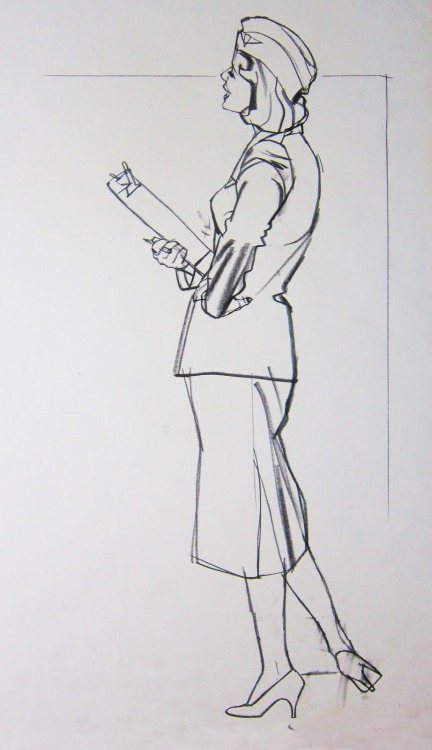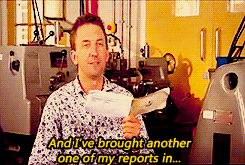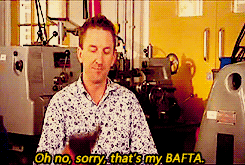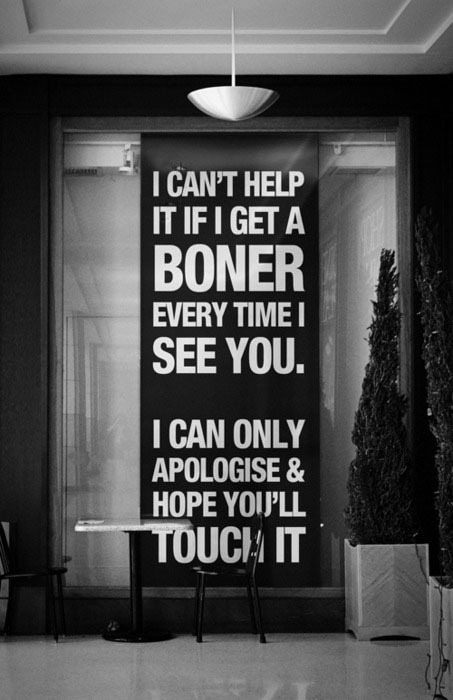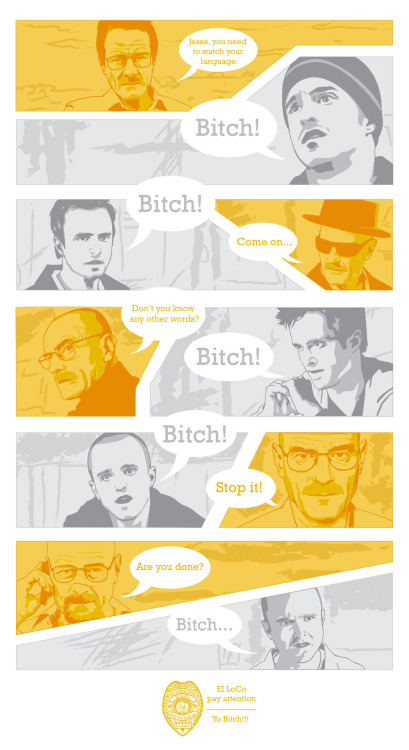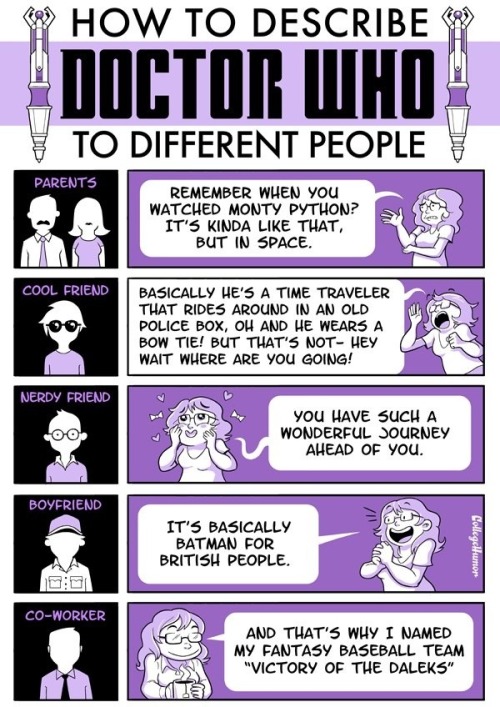Wednesday 26 September 2012
something from the Japs
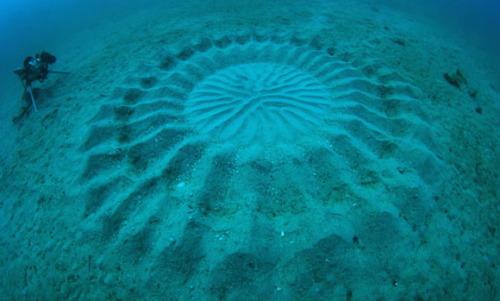
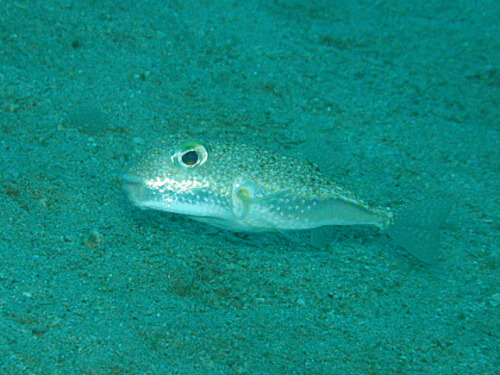


From the Department of Awesome Natural Wonders come these mysterious patterns on the ocean floor off the southern coast of Japan. Japanese scuba diver and photographer Yoji Ookata, who has spent the last 50 years exploring and documenting his underwater discoveries off the coast of Japan, spotted these beautiful and puzzling patterns in the sand, nearly six feet in diameter and 80 feet below sea level, during a dive near Amami Oshima at the southern tip of the country.
So what happened next? Are these rippling geometric patterns the equivalent of crop circles on the seafloor? Not quite, but the answer is still a good one. Colossal explains:
Busy little pufferfish boys wooing potential mates by sculpting the sand with their bodies. As far as we’re concerned, that’s pretty awesome!“He soon returned with colleagues and a television crew from the nature program NHK to document the origins what he dubbed the “mystery circle.”
Using underwater cameras the team discovered the artist is a small puffer fish only a few inches in length that swims tirelessly through the day and night to create these vast organic sculptures using the gesture of a single fin. Through careful observation the team found the circles serve a variety of crucial ecological functions, the most important of which is to attract mates. Apparently the female fish are attracted to the hills and valleys within the sand and traverse them carefully to discover the male fish where the pair eventually lay eggs at the circle’s center, the grooves later acting as a natural buffer to ocean currents that protect the delicate offspring. Scientists also learned that the more ridges contained within the sculpture resulted in a much greater likelihood of the fish pairing. To learn more about the circles check out the full scoop over on Spoon and Tamago, and you can see two high resolution desktop photos courtesy of NHK here.”
[via Colossal]
Tuesday 25 September 2012
Monday 24 September 2012
Thursday 20 September 2012
Wednesday 19 September 2012
Black and White Photography
Black and white photography can be challenging especially for new and aspiring photographers today when most people see and define beautiful photos are made up of beautiful colors. However, more and more professional photographers apply this technique for which photographing in monochrome can introduce a whole new character from a familiar subject. It creates a certain feel that even non photographers can connect. A recently taken photo when transformed into black and white can introduce a new perspective, bring back old memories and create a stunning and more artistic effect.

Another reason why black and white photography is still popular is that color can sometimes be a distraction. It takes away the focus of the audience in certain important elements of the photo like shape and form, texture, lighting and tonal contrast. These elements of a good photograph are mostly emphasized and seen over photos in black and white, monochrome, infrared, etc. Learning and experimenting with taking pictures in this format takes a better understanding of how the elements of good photography must be properly incorporated in different techniques.

As a part of your daily dose of inspiration, we here at YTD have collected some of the most stunning photographs in black and white including some important notes on different elements to help you improve taking pictures in this format.
Choosing the right subject for your photograph is very essential. Although anything around you can be a nice subject when seen in a different angle and applied with good photo-taking technique, not all photo subjects can be good looking in black and white format. A beautiful sunrise that keeps the refreshing feeling through the vibrant hues of the sun and the skies can look dull and sad when transformed into black and white. Learning to see your subject in black and white right before you shoot them is an effective technique although it requires more practice and experimenting.




Digital photography today makes the audience see photographs in color more often. In black and white format, colors are converted to shades of gray. Lighter colors are the highlights which portray open and free feelings. The darker colors on the other hand become darker shades which convey a sad or empty mood. The relative difference on both shades is called tonal contrast. This element is used to create dramatic scenes over an image of completely different mood when in colored.




Lighting does the trick in making the great details in black and white photography. Remember that you are not using the variations of different colors in making the details more vivid and arranged. You must make sure you have enough light to capture and highlight all the details of your subject. Knowing the right amount of light to use as well as its source and direction can help you capture the perfect angle of the subject in different settings and perspective.






Shape is interpreted by blocks of light and dark areas in your black and white photo. Most likely, shape is the subject’s appearance in two dimensions. A silhouette of a certain subject is considered as a shape in your photo. Form on the other hand depicts how your subject looks like in three dimensions. The form in black and white pays attention to the shadows and flowing lines. The subject can look three dimensional using side lighting and casting shadows. Lines however convey tension and movement in your photograph which are mostly seen over photos of moving subjects. Patterns like lines are often disregarded in colored images but clearly emphasized when transformed in monochrome.






Texture looks great in black and white. A rusty metal, a dirty wall of a building or the wrinkled face of an old woman are some of the best examples of subjects that look good in black and white format. It defines realism on the subject and when applied with good lighting condition creates a whole new look and produces details that are not appreciated in full color photographs.






Black and white photography is a great choice among photography professionals and enthusiasts because it tells the stories beyond reality and interprets it clearly in a new level of art form; it connotes an old classic fineness; and it is plain, simple and fun. So its now time to browse through your archives of previous shots, you’ll never know – the colored photo you think was a failure before can be a stunning piece of art in black and white.
Share us your thoughts, inquiries and suggestions by commenting below. Find us on Facebook, Twitter and Google Plus for more updates. Don’t forget to subscribe to our blog for everyday design news, content and freebies. Stay awesome everyone!
Read more posts by Kerby Rosanes


“95″ | Photography by Thomas Holtkoetter | (Source)
Another reason why black and white photography is still popular is that color can sometimes be a distraction. It takes away the focus of the audience in certain important elements of the photo like shape and form, texture, lighting and tonal contrast. These elements of a good photograph are mostly emphasized and seen over photos in black and white, monochrome, infrared, etc. Learning and experimenting with taking pictures in this format takes a better understanding of how the elements of good photography must be properly incorporated in different techniques.

“WD40″ | Photography by Tim Tadder | (Source)
As a part of your daily dose of inspiration, we here at YTD have collected some of the most stunning photographs in black and white including some important notes on different elements to help you improve taking pictures in this format.
Subject
Choosing the right subject for your photograph is very essential. Although anything around you can be a nice subject when seen in a different angle and applied with good photo-taking technique, not all photo subjects can be good looking in black and white format. A beautiful sunrise that keeps the refreshing feeling through the vibrant hues of the sun and the skies can look dull and sad when transformed into black and white. Learning to see your subject in black and white right before you shoot them is an effective technique although it requires more practice and experimenting.

“Rani” | Photography by Robert | (Source)

“Tired” | Photography by Khalid Aziz | (Source)

“Face” | Photography by Meng Jason | (Source)

Street Photography by Iannis Psallidakos | (Source)
Tone
Digital photography today makes the audience see photographs in color more often. In black and white format, colors are converted to shades of gray. Lighter colors are the highlights which portray open and free feelings. The darker colors on the other hand become darker shades which convey a sad or empty mood. The relative difference on both shades is called tonal contrast. This element is used to create dramatic scenes over an image of completely different mood when in colored.

“Genius” | Photography by Dean Bradshaw | (Source)

“Red Deer – On White” | Photography by George Wheelhouse | (Source)

“Arbore, Ari and Banna Tribes” | Photography by Ralph Bennett Crignola | (Source)

“When Dance Becomes A Poem” | Photography by Georgi Andinov | (Source)
Lighting
Lighting does the trick in making the great details in black and white photography. Remember that you are not using the variations of different colors in making the details more vivid and arranged. You must make sure you have enough light to capture and highlight all the details of your subject. Knowing the right amount of light to use as well as its source and direction can help you capture the perfect angle of the subject in different settings and perspective.

“Faces” (part 2) | Photography by Khalid Aziz | (Source)

“Dog Portrait” | Photography by Marko Savic | (Source)

“Portraits” | Photography by Robert Harrison | (Source)

“Stairway to nowhere” | Photography by Fabio Ornago | (Source)

Photography by Lawrence del Mundo | (Source)

“From Mine to Market – the Diamond Story” | Photography by The New Cruelty | (Source)
Shapes, Forms, Lines and Patterns
Shape is interpreted by blocks of light and dark areas in your black and white photo. Most likely, shape is the subject’s appearance in two dimensions. A silhouette of a certain subject is considered as a shape in your photo. Form on the other hand depicts how your subject looks like in three dimensions. The form in black and white pays attention to the shadows and flowing lines. The subject can look three dimensional using side lighting and casting shadows. Lines however convey tension and movement in your photograph which are mostly seen over photos of moving subjects. Patterns like lines are often disregarded in colored images but clearly emphasized when transformed in monochrome.

Photography by Sam Weinstein | (Source)

“My Switzerland” | Photography by Carole Lulu Lauener | (Source)

“Slices of Silence” | Photography by Nathan Wirth | (Source)

“City of Fog” | Photography by Martin Stavars | (Source)

“Subway Black and White” | Photography by voogac | (Source)

“Untitled” | Photography by Nydia Lilian | (Source)
Texture
Texture looks great in black and white. A rusty metal, a dirty wall of a building or the wrinkled face of an old woman are some of the best examples of subjects that look good in black and white format. It defines realism on the subject and when applied with good lighting condition creates a whole new look and produces details that are not appreciated in full color photographs.

“Portrait in Train” | Photography by Kimhwan SEOULIST | (Source)

“BODIE” | Photography by Dhiren Babaria | (Source)

“BODIE” | Photography by Dhiren Babaria | (Source)

“Sikh Temple, Dubai” | Photography by Khalid Aziz | (Source)

“Black and White Lion” | Photography by DanielleMiner | (Source)

“H A N D S” | Photography by Robert Harrison | (Source)
Black and white photography is a great choice among photography professionals and enthusiasts because it tells the stories beyond reality and interprets it clearly in a new level of art form; it connotes an old classic fineness; and it is plain, simple and fun. So its now time to browse through your archives of previous shots, you’ll never know – the colored photo you think was a failure before can be a stunning piece of art in black and white.
Share us your thoughts, inquiries and suggestions by commenting below. Find us on Facebook, Twitter and Google Plus for more updates. Don’t forget to subscribe to our blog for everyday design news, content and freebies. Stay awesome everyone!
Read more posts by Kerby Rosanes
Subscribe to:
Posts (Atom)
